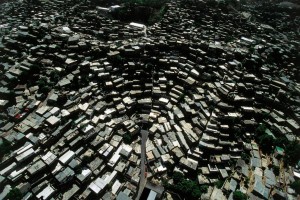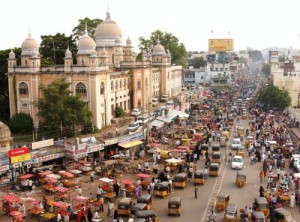Category Archives: Students
EcoSydney? – Understanding the future of an ecocity
URBAN SCENARIO IN INDIA & ENERGY EFFICIENCY AS ENGINE OF ECONOMIC GROWTH
In India, cities are growing at breakneck speed to accommodate a rapidly growing population attracted by prospects of better economic and living opportunity and also due to The fast-paced growth of the Indian economy which has ironically led to a rapid disintegration of the existing infrastructure
Generally Master planning in India is done every 10-20 years that are supposed to anticipate how the city’s population and boundaries might grow, and what the city needs to do to absorb this growth, function effectively and remain liveable . And yet, it is hard to find examples of large Indian cities that have managed to stay ahead of the urbanization curve and cope with the growth that urban areas have experienced over the past two decades.
Yet despite these Master Plans, what we have seen is a sharp decline in the quality of life of urban residents over the last few decades. This is manifested in terms of lack of amenities, inadequate infrastructure, high population density, as well as degradation in environmental aspects such as green cover and air and water quality.
This is due to the fact that the “Master Plans” our cities prepare are ineffective, because there are fundamental flaws in the way our cities plan for their future growth .
Problems With The Current System of City Planning are:
Lack of professional planners The planning is generally carried out by government bodies without the involvement of professional designers or planners.
Extremely long time cycle times: The time frame for plan preparation and approval can run into several years. Indeed, there are several cases where it has taken cities 10 years to prepare and get approval of their 20 year Master Plan.
Highly inflexible: The Master Plans are supposed to completely chart out how the city will develop over the next 20 years. However, the actual population or economic growth often turns out to be different than what was projected. Thus the Master Plan becomes more and more distanced from the actual development of the city, for example the establishment and growth of the IT industry since the mid 90s in many Indian cities. This industry was almost non-existent before 90s However as the IT industry boomed in , it led to the creation of large IT parks just outside the city, which in turn caused fringe areas in the cities near those IT parks to rapidly develop and become highly populated but without adequate road, water or sewage facilities because the Master Plan had not envisioned this type of growth in these areas.
Lack of Credible Financial Plan: Most cities underestimate the cost of implementing their Master Plans and are overly optimistic about implementation. This leads to very low implementation when it comes to civic amenities and infrastructure because most cities simply don’t have the finances to make the investments required.
We need more dynamic and flexible Master Plans to guide and direct the growth of our cities. Furthermore, the planning process should allow for constant updates and changes at the micro level so as to allow cities to quickly adapt to ground realities and new scenarios over the life of the plan. Accomplishing the above requires a radically different approach to Master Planning than what we have currently and needs to include few elements in order to make the resultant Master Plans more effective.
- An explicit vision of where the city wants to be in 10 and 20 years and what that entails in terms of development along numerous dimensions (land use, transportation, public services and amenities, environment, housing, economic growth etc).
-Decomposition of the Master Plan in to a high level “macro” plan and a series of more detailed “micro plans”. Instead of trying to plan how every square foot of land in the city should be used in the future, Master Plans should focus on major city level issues such as transport networks, city level amenities, affordable housing, and city level population density controls. The need for State approval too should be limited to this high level Master Plan.
-A robust financial plan, that clearly spells out how the city will raise the needed finances to carry out all the development activities envisioned in the Master Plan. This could include new taxes and charges, monetization of underutilized assets owned by the city, public private partnerships, and loans from multilateral agencies. It would also contain binding commitments about the minimum percentage of the annual city budget that would be devoted towards implementing the master plan.
-Greater use of technology to compile, analyze and present information.
Ultimately, if we want to reform how our cities look and function, we need to reform the way our cities plan for the future. Without this our cities will become even less livable and even less able to provide for their residents than is the case today.
Three key challenge for urban development in India
Rapid and unprecedented population growth have contributed to common, pressing issues for India’s cities. Many of these are inherently linked to transportation, including reducing urban sprawl, ensuring safe access to city services, and addressing the real estate industries’ roles in determining cities’ designs.
1) Urban sprawl
In the past two decades, Indian cities have grown tremendously—not only in population, but in geographic size. For instance, Delhi’s urban area has almost doubled in last 20 years. This has led to an increase in average trip lengthfrom 8.5 kilometre to 10.5 kilometre, and this commuting distance is projected to increase further. Sprawling cities and reliance on automobiles have contributed to traffic congestion, air pollution, rising greenhouse gas emissions, and poor public health. Ensuring that the cities of the future are both liveable and sustainable requires that decision-makers find ways to shorten commuting distances and decrease urbanites’ reliance on automobiles.
2) Traffic safety and accessibility
According to the World Health Organization , 10 percent of the world’s road fatalities (130,000) occur in India alone. Traffic crashes occur every minute,and a life is lost every 3.7 minutes. Crashes have a significant negative impact on the nation’s economy, costing the country the equivalent od 3 percent of its GDP between 1999 and 2000. These startling numbers mean that city leaders and other decision-makers must consider issues of safety not only on the road, but also in the surrounding environment. Safety and accessibility are key components of ensuring that cities become secure, sustainable places to live.
3) Future real estate development
As more and more people move into India’s cities, these people will need safe places to live, work, and commute. There’s already projected to be a shortage of 187 million households in India between 2012 and 2017. Real estate developers will inevitably aim to meet this shortage, which means that they’ll have a massive influence in shaping what India’s cities look like in the future. Will the private sector invest in developments that provide access to sustainable transport, or will they follow a business-as-usual path and perpetuate problems of urban sprawl, pollution, and unsafe roads?
ENERGY EFFICIENT AS ENGINE OF ECONOMIC GROWTH
Both the architectural and planning professions needs to consider few points to increase the energy efficiency of new development and the existing urban landscape because that in long term vision will have a positive economical impact for the country . It is necessary when trying to use energy efficiency as a major consideration in urban development to develop a systematic analytically and design system on which all proposals can be based. Because urban design deals with the overall design of an area and combines many aspects of the various disciplines engaged in urban development, incorporating energy efficiency as a major design consideration into the discipline would mean that awareness of energy efficiency would become a part of every stage of the development process.
These are factors which needs to be considered for an energy efficient model
Transportation – How accessible are energy-efficient modes of transportation? Does city planning consider location-efficient development?
Energy and Water Utilities – Do residents have access to significant energy and water efficiency programs?
Building Policies – Do building codes have requirements and/or incentives in place to encourage energy efficient development?
Most important is travel efficiency as it relates to the energy consumption of different modes of transport. An effective way of enhancing energy efficiency is to encourage travelers or shippers to use more efficient forms of transport, such as public transport and non-motorized vehicles.
Especially in urban areas, most journeys involve distances of below five kilometers. A variety of measures can be implemented to encourage citizens to travel such distances by bike or on foot. For longer journeys, public transport provides an alternative to the automobile. Increasing the share of public transport will lead to higher rates of occupancy in buses and trains, which will further increase their energy efficiency.
Strategic plans needs to be developed for the road and rail networks along settlement structures. They are therefore the key actors in developing long-term strategies or master plans for greater energy efficiency. With the right incentives the use of highly energy-efficient modes of transport could be expanded and their attractiveness enhanced. Wrong incentives, which promote the use of private motorized vehicles must be reduced. It is important that non-efficient modes of transport become less convenient to use throughout the entire urban structure.
These energy efficiency concepts not only solve their particular urban development problems, but also should provide multiple benefits like – Better transportation system and more comfortable forms of travel, Reductions in air pollution and noise, with a positive impact on human health and city livability Reduction of environmental damage, both locally and on a global scale; Reduction of urban sprawl by promoting dense structures and mixed land use; Increased competitiveness and attractiveness of the city (including for foreign investors), which attracts companies and highly qualified employees; Additional revenue for the city that could be invested in new transport infrastructure and contribute to the reduction of external transport costs.
Does architecture stimulate value in growth analysis?
This paper aims to acknowledge and decipher the discourse between two very different languages for purposes of a mutual understanding, bridging spatial terms between economists and architects (and similar urban design and planning professions).
In addition the driving factors of economic growth of human activities, through risk awareness and mitigation enables a framework that promotes spatial implications.
It appears to facilitate the architectural role of form-finding and boundary-making undertakings. This paper will focus on emerging market, developing countries.
Click to view PDF below:
Does/ could architecture stimulate economic growth? (Economics & Sustainability)
References:
- Human Development Report: Sustaining Human Progress: Reducing Vulnerabilities and Building Resilience, UNDP 2014
- Risk and Opportunity: Managing Risk for Development, World Bank 2013.
- On Rationality and Foreign Policy: The Foundation for the Defense of Democracies Doesn’t Know Soviet History [Forbes], http://www.forbes.com/sites/markadomanis/2012/01/13/on-rationality-and-foreign-policy-the-foundation-for-the-defense-of-democracies-doesnt-know-soviet-history/
- Luxury Wars: Explaining the Value of a $70,000 Watch [Forbes], http://www.forbes.com/sites/valeriejack/2014/11/17/luxury-wars-explaining-the-value-of-a-70000-watch/2/
- http://www.arch.columbia.edu/files/gsapp/imceshared/Conference%20Program.pdf



